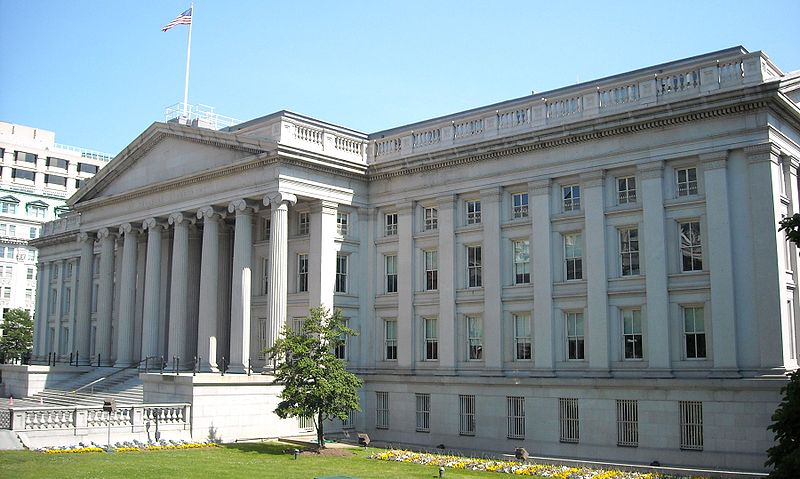What’s in the Executive Order on Election Interference?
On Sept.

Published by The Lawfare Institute
in Cooperation With

On Sept. 12, President Trump signed Executive Order 13848, titled “Imposing Certain Sanctions in the Event of Foreign Interference in a United States Election.” Reporting in early August suggested that such an order was being drafted, though—as will be discussed below—it appears to have changed in some meaningful ways.
The document opens by finding that foreign persons’ “ability … to interfere in or undermine public confidence in [U.S.] elections … constitutes an unusual and extraordinary threat to the national security and foreign policy of the [U.S.],” thus triggering the president’s authority under the International Emergency Economic Powers Act (IEEPA), codified at 50 U.S.C. §1701. (For additional background on IEEPA in the sanctions context, see here. For additional background on IEEPA more generally, including surveys of past uses, see here, here and here).
Initial Determinations
Section 1 of the order establishes an interagency process for determining whether election interference has occurred. First, the director of national intelligence (DNI) has 45 days to determine—in consultation with appropriate agencies—whether “a foreign government, or any person acting as an agent of or on behalf of a foreign government, has acted with the intent or purpose of interfering in [any election for Federal office].” Second, within 45 days after receiving the DNI’s assessment, the attorney general and secretary of homeland security—in consultation with appropriate agencies—are to send the president and the secretaries of state, defense and the treasury a report evaluating two questions:
(i) the extent to which any foreign interference that targeted election infrastructure materially affected the security or integrity of that infrastructure, the tabulation of votes, or the timely transmission of election results; and
(ii) if any foreign interference involved activities targeting the infrastructure of, or pertaining to, a political organization, campaign, or candidate, the extent to which such activities materially affected the security or integrity of that infrastructure, including by unauthorized access to, disclosure or threatened disclosure of, or alteration or falsification of, information or data.
The directive also requires the report to “identify any material issues of fact with respect to these matters that the Attorney General and the Secretary of Homeland Security are unable to evaluate or reach agreement on at the time the report is submitted.”
It is worth noting that Section 1 is focused almost exclusively on disruptions to “election infrastructure,” which the order later defines somewhat narrowly:
[T]he term “election infrastructure” means information and communications technology and systems used by or on behalf of the Federal Government or a State or local government in managing the election process, including voter registration databases, voting machines, voting tabulation equipment, and equipment for the secure transmission of election results.
To the extent that the determination under Section 1 is a necessary trigger for the imposition of sanctions under Sections 2 or 3, this definition be significant. (The Order notably requires the various interagency players to “develop a framework for the process that will be used to carry out their respective responsibilities pursuant to this order” within 30 days after it was signed.) However, as will be discussed below, the actual conduct triggers for designation are broader and could be used to capture other interference by foreign actors.
Sanctions
The directive adopts an unusual two-track approach for actual designations: one for foreign persons who actually engage in election interference and another for broader measures to target the states behind those efforts. Additionally, contrary to some reporting, it is not entirely clear that the order would mandate the automatic imposition of sanctions. As will be discussed below, the Treasury-led sanctions would require the identification of specific persons closely tied to election interference efforts. And the White House’s sanctions appear even more discretionary. In this regard, the order appears to be more of a signal that the guns are loaded and less of a notice that some kind of automatic doomsday machine has been activated. This is not without precedent. For example, on May 16, 2011 President Obama signed Executive Order 13611 “Blocking Property of Persons Threatening the Peace, Security, or Stability of Yemen.” Like Trump administration order, Obama’s order did not specifically designate any individuals at the time it was issued. Rather, it appears to have been part of a broader policy effort to help encourage a peaceful transition of power in Yemen. It was not until November 2014—over two years later—that any individuals were designated under the authority. Trump’s order seems to follow a similar model, signalling that the administration is ready to respond if necessary. However it may be a stretch to characterize the sanctions as “automatic,” especially when compared to the truly automatic sanctions which bills like the Deter Act (discussed below) would require.
Treasury-led process
Section 2 follows the model of a typical IEEPA-based sanctions EO: the Order establishes conduct-based criteria for designation and then delegates the implementation of sanctions to the Department of the Treasury. (For those interested, a number of sanctions-related EOs can be found here.) Specifically, Section 2 empowers the Secretary of the Treasury—in consultation with the Attorney General and the Secretaries of State and Homeland Security—to block the property under U.S. jurisdiction of foreign persons determined—
(i) to have directly or indirectly engaged in, sponsored, concealed, or otherwise been complicit in foreign interference in a United States election;
(ii) to have materially assisted, sponsored, or provided financial, material, or technological support for, or goods or services to or in support of, any activity described in subsection [(i)] … or any person whose property and interests in property are blocked pursuant to this order; or
(iii) to be owned or controlled by, or to have acted or purported to act for or on behalf of, directly or indirectly, any person whose property or interests in property are blocked pursuant to this order.
These prongs allow the Treasury Department to target specific perpetrators as well as their facilitators. However, they do not include a prong for “Internet-based disinformation efforts,” which reportedly had been included in an earlier draft. Additionally, the term “foreign interference” is defined later in the order:
[T]he term “foreign interference,” with respect to an election, includes any covert, fraudulent, deceptive, or unlawful actions or attempted actions of a foreign government, or of any person acting as an agent of or on behalf of a foreign government, undertaken with the purpose or effect of influencing, undermining confidence in, or altering the result or reported result of, the election, or undermining public confidence in election processes or institutions …
While this is certainly broad enough to capture government-sponsored hacking, it does not go as far as the bipartisan Deter Act (discussed earlier here). For example, the Deter Act defined “interference” to include “[c]ontributions or expenditures for advertising, including on the internet,” as well as the use of “social or traditional media to spread significant amounts of false information.”
White House-led process
Section 3 of the order lays out a very different process. Unlike Section 2, Section 3 places the White House at the center of any decisions to implement sanctions beyond those who actually interfered and their facilitators:
[T]he Secretary of State and the Secretary of the Treasury, in consultation with the heads of other appropriate agencies, shall jointly prepare a recommendation for the President as to whether additional sanctions against foreign persons may be appropriate in response to the identified foreign interference and in light of the evaluation in the report mandated by section 1(b) of this order, including, as appropriate and consistent with applicable law, proposed sanctions with respect to the largest business entities licensed or domiciled in a country whose government authorized, directed, sponsored, or supported election interference, including at least one entity from each of the following sectors: financial services, defense, energy, technology, and transportation (or, if inapplicable to that country’s largest business entities, sectors of comparable strategic significance to that foreign government). The recommendation shall include an assessment of the effect of the recommended sanctions on the economic and national security interests of the United States and its allies. Any recommended sanctions shall be appropriately calibrated to the scope of the foreign interference identified…
The document then details the potential measures which could be imposed which include, among others, the blocking of property, restrictions on access to financial institutions, and “any other measures authorized by law.”
***
As Megan Reiss discusses in detail, the new order is quite different than the bills which are under consideration on Capitol Hill. For example, as a practical matter, Section 3 means that larger, state-punishing sanctions—the kind which the Deter Act requires to be automatically imposed if the director of national intelligence finds election interference—to be tailored to the actual interference which occured. Given the extraordinary scale of the potential measures in Section 3 and the Deter Act, this may be quite sensible. However, as Megan explains—and as Sens. Rubio and Van Hollen noted when the order was signed—a true deterrence policy may call for a different approach.



.jpg?sfvrsn=8588c21_5)
